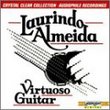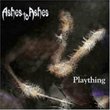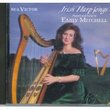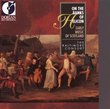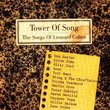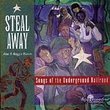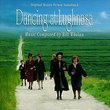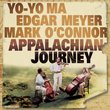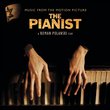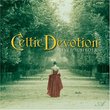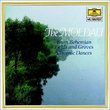| All Artists: Bach, Fox, Franck, Dupre, Widor, Vierne Title: Virgil Fox: Organ Recital Members Wishing: 0 Total Copies: 0 Label: Delta Release Date: 7/10/1990 Genres: Special Interest, Classical Styles: Chamber Music, Forms & Genres, Concertos, Historical Periods, Baroque (c.1600-1750), Classical (c.1770-1830), Instruments, Keyboard, Symphonies Number of Discs: 1 SwapaCD Credits: 1 UPC: 018111531320 |
Search - Bach, Fox, Franck :: Virgil Fox: Organ Recital
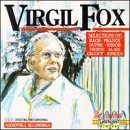 | Bach, Fox, Franck Virgil Fox: Organ Recital Genres: Special Interest, Classical
|
Larger Image |
CD DetailsSimilar CDs
Similarly Requested CDs
|
CD ReviewsVirgil Fox's Last Recording Donald M. Sherrell | Los Angeles, CA | 12/19/1999 (5 out of 5 stars) "This is the first digital recording made in the United States and again Mr.Fox was on the cutting edge. It was played on the Rafatti Organ at the Walnut Grove Community Church in California. The Artistry of Virgil Fox is evident throughout this recording as in all of his recordings. A beautiful farewell from a great performer and superb human being. I recommend it without reservation." A "stopgap" until you can manage to find the real deal. Bob Zeidler | Charlton, MA United States | 10/26/2003 (2 out of 5 stars) "The provenance of this LaserLight CD is detailed below, in a near-identical release of Virgil Fox performing this music, but on the Bainbridge label and titled "The Digital Fox." This LaserLight release, while both inexpensive and readily available, suffers from a few major deficiencies: (1.) There is a brief, but disconcerting, drop-out at the beginning of the opening track. (2.) Despite its clearly being labeled as "Digital" (on both the booklet cover and on the CD), and a booklet note to the effect that "...Virgil Fox began an historic series of recordings: the first digital tape recordings made in the United States," this is NOT a digital recording; the CD transfer was made from analog direct-to-disk LP-master lacquers. (3.) This transfer process has altered the frequency balance, causing it to be bass-heavy and treble-shy. (4.) The booklet notes are useless. If you consider yourself a Virgil Fox fan, seek out that Bainbridge release. My comments on that release follow below. -------------------------------------------------------------- There is so much of historical significance to Virgil Fox fans and pipe organ aficionados in this album, originally recorded in 1977, that it is rather difficult to know where to begin. It was Fox's final recording, made when he had already been diagnosed with cancer. (He lived another three years, but his performing schedule and abilities declined, at first slowly but then precipitously as the cancer metastasized in his hands.) It was also the first, last and only recording - to the best of my knowledge - of what was then a new (1976) Ruffati organ installation in the Garden Grove Community Church (that of Dr. Robert Schuller); not long after the recording session, the organ was dismantled, and parts of it combined with parts from the 1962 Aeolian-Skinner organ from Philharmonic Hall in Lincoln Center, NY, to become the new installation in the equally-new Crystal Cathedral in Garden Grove. (The Philharmonic Hall organ was removed when the venue was remade as Avery Fisher Hall.) And apparently - with evidence that is difficult to refute - this was the first digital recording made in the U.S. It remains as the sole digital recording that Fox made. This digital provenance was not at first known. Originally, the 1977 Garden Grove sessions had been released on a pair of direct-to-disk LPs on the Crystal Clear label. According to the copyright information on this Bainbridge CD, the date of digital release was 1983, three years after Fox's death. To confuse matters further, the 1977 Garden Grove sessions are also available on a LaserLight CD release, an item I review elsewhere under the product title "Virgil Fox Performs Bach, Franck, Dupre, Widor and others." (From what web research findings I've been able to locate, the provenances of the two releases differ, with the LaserLight CD release being made from the original direct-to-disk lacquer masters, not always the same precise "takes" as here, although the sessions were the same. The LaserLight release is inferior, for both sonic reasons and others, a point I clarify in that other review.) So much for the historical materials. It is the music - and the performance here - that matters. Virtually every work on this CD is a "staple" in the organ soloist's repertoire. (A minor exception should probably be made for the Jehan Alain work, "Litanies," seldom heard but now part of a definitive set of Jehan Alain CDs on the Erato label by his sister, Marie-Claire Alain.) Lest there be any question regarding Fox's terminal illness causing a loss of ability and technique at the time this recording was made, he immediately puts that question to rest in the opening work, the famous Bach Toccata and Fugue in D Minor, BWV 565. At the outset of the Toccata of this chestnut, his articulation is crisp; throughout, his choices of stops and voicings are appropriate, and, during the closing pages of the fugue, one can again hear his impeccably crisp playing. While perhaps somewhat on the "romantic" side in terms of his use of rubato, this is not an idiosyncratic interpretation at all; rather, simply, Bach played well. Probably my favorite recording of the work. Joseph Jongen, a Belgian whose Symphonie Concertante for Organ and Orchestra is probably second only to the famous Saint-Saëns Symphony No. 3 for popularity in this genre, is justly famed for the final Toccata of this work. Here, Fox (as, apparently, only he could do) interpolates large portions of the orchestral accompaniment along with the solo organ part, in a truly prodigious display of technique. At the close of this Toccata, there is a descending scale passage, a finishing flourish that "makes or breaks" concert organists. Fox blows through this passage as if it were child's play. The rest of this album of organ chestnuts is "of a piece" with the above-mentioned ones: Fox in prime time. The recorded sound is terrific: it has excellent frequency and dynamic range, and just the right amount of ambient reverberation has been caught. One wishes that this remarkable Ruffati organ installation had been recorded more than just this once, before it emerged transmogrified (along with the Philharmonic Hall organ) as the Crystal Cathedral organ; it - for all its brevity of existence - was one fine instrument. The booklet notes include a small note to the effect that "...the newest technology, Digital Tape, was employed as well." (This technology was NOT used for the original Crystal Clear LPs, from which the LaserLight CD was derived.) For this reason, and others as well, Fox fans should seek out this Bainbridge "true digital" release over the less expensive but decidedly inferior LaserLight release. Bob Zeidler" The Fox Touch Revisited Norman H Stevens | Lake View Terrace, California United States | 06/22/2004 (4 out of 5 stars) "I just received the LaserLight recording compiling the two Crystal Clear direct to disc recordings of 1977 at the Garden Grove Community Church. I still have the LP's, in mint condition, since I recorded them on metal tape and never played the vinyl since, but, I retired my cassette deck several years ago. The CD is well balanced from bottom to top and the only flaw is the first two notes (A,G) are missing from track one. This combination of a very large five division organ and the genious of Virgil Fox and a fine master recording is difficult to beat. A definite lease breaker!"
|

 Track Listings (9) - Disc #1
Track Listings (9) - Disc #1